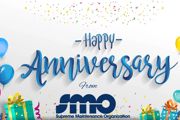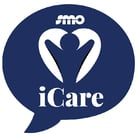

Cleaning operations are increasingly challenged with protecting the health and safety of their cleaning staffs. Workplace hazards not only expose a cleaning operation to costly liability risks but are also a prime contributor to lost work days and operational inefficiency. To combat these problems many BSC's are putting increased emphasis on formalizing their efforts to improve safety. For many, the cornerstone of that effort is the development of a Cleaning Safety Program.
What are some of the primary elements of such a program?
Understanding Where You Are
What is the current status within your operation? Do you have hard facts regarding the safety of your operation or are your impressions based more on feel and loose information? An effective cleaning safety program will contain methods for calculation of MOD Rates. Your MOD rates will provide you with a benchmark to compare your operational safety with established industry standards. These rates are classified as follows:
- MOD Rate < 1.0: The operation is operating at a level that is safer than average.
- MOD Rate = 1.0: The operation has a safety record that is average.
- MOD Rate > 1.0: The operation is performing below average (i.e. greater "risk").
Periodic assessment of your MOD rate will provide you with an objective indication of the effectiveness of your safety program.
Communicate the Hazards
The foundation of any good employee safety program is---communication. A prime example is the communication of any hazardous materials your cleaning staff will encounter during performance of their duties. Your communication of these hazards should be in compliance with OSHA Standard "CFR 1910.1200". This will apply to a variety of areas such as: proper labeling of containers, use of applicable safety data sheets (SDS), handling of bloodborne pathogens, establishment of training routines, etc.
Proactive Slip and Fall Prevention
Some things never change. That is certainly the case for slips and falls. These seemingly mundane accidents continue to be among the highest contributors to employee injury and downtime. A cleaning safety program should contain a robust approach to slip and fall prevention. This would include proactive measures such as:
- Good housekeeping practices
- Proper footwear
- Rapid containment of spills
- Adequate lighting
- Slip resistant flooring in high-risk areas
Documentation, Inspection, and Correction
Any cleaning safety program will only be as good as its implementation. That implementation should include provisions for: full documentation of the program, detailed inspection processes, and a closed-loop corrective action process. Your program should be a living, breathing, entity. It should also be formalized in ways that will provide weight and control.
Creating the Mindset
And last, but certainly not least, is mindset. A commitment to safety must be keenly felt and demonstrated throughout the entire cleaning operation. Creating a mindset that is sustainable will require the provision of messaging, training, and support that is consistent and engaging.
Starting with these essentials will put you on the path to providing a safer working environment within your cleaning operation.



.jpg?width=220&height=135&name=Blog%20Listing%20Image%20(13).jpg)
-1.jpg?width=220&height=135&name=Blog%20Listing%20Image%20(5)-1.jpg)

.png?width=180&height=138&name=Untitled%20design%20(25).png)


